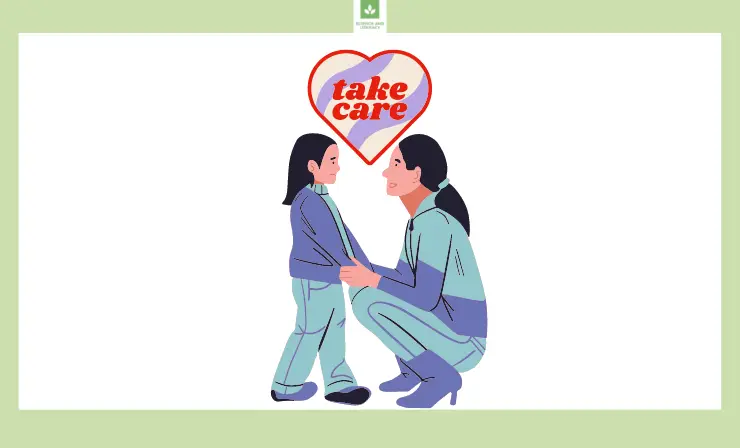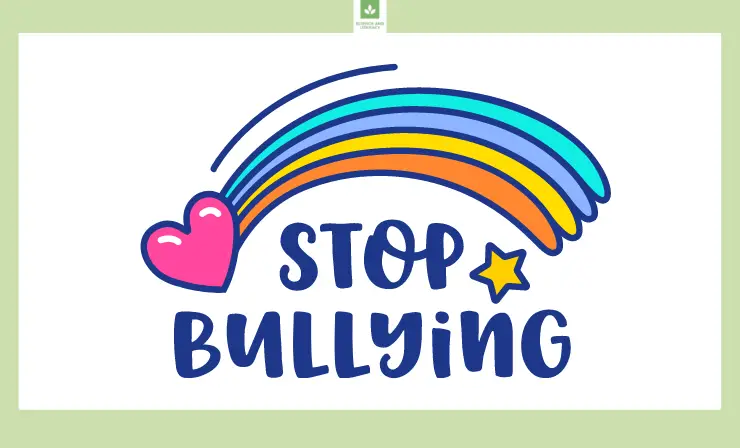Most of us have seen bullying more than once in our lives. Unfortunately, bullying is very common in schools. As a matter of fact, around 20 percent of students between the ages of 12 and 18 say they have experienced bullying nationwide. As a teacher and parent, this is a scary thought, but it is a reality. Teachers and parents must become aware of what bullying is, understand the types of bullying in schools, learn about the effects, and have a solution to combat it. I decided to write this article to help parents and educators realize that bullying does exist and help spread awareness on how to tackle this issue. My hope is to minimize bullying in schools around the world.
If you don’t want to read the article in full, you can watch the video. It contains the summary of the article.
After reading this article, you will officially know:
- What bullying is→
- The various bullying types that occur in schools→
- The effects of bullying→
- And several ways to reduce bullying in schools→
What Is Bullying?
According to the Centers for Disease Control and Prevention, “bullying is any unwanted aggressive behaviors by another youth or group of youths, who are not siblings or current dating partners, that involves an observed or perceived power imbalance, and is repeated multiple times or is highly likely to be repeated.”

After reading this definition provided by the CDC, you should focus on three main parts of it. These important parts include:
- Any unwanted aggressive behavior
- Power imbalance or seeking power over someone
- Repetition or likelihood of repeating aggressive behaviors toward someone
Bullying is very common and usually not hard to notice. In fact, 1 in 5 high school students are bullied in school. If a student identifies as part of the LGBTQ+ community, their chances of being bullied tend to rise. About 40 percent of LGBTQ+ high school students are bullied, while 22 percent of heterosexual high school students are bullied. You may also be surprised to learn that middle school students (28 percent) are bullied the most followed by high school students (16 percent).
To get a better understanding of how to reduce bullying, school shootings, and violence, watch TEDx Talks’ YouTube video. In this video, a man gives his experience of the bullying and violence he experienced in school as well as what he thinks should be done about it. It is very informative and interesting to watch!
If you are in the market for new products for your classroom, I recommend purchasing a document camera. These devices are wonderful when it comes to magnifying any sheet of paper or item that you would like your entire class to see. They can be used virtually and in-person.
5 Types of Bullying in Schools
There are many different ways that bullying can occur in schools. Some are easy to see, while other types are more subtle. My suggestion is to keep your eyes and ears open as well as always encourage your students to come to you with any problems that they are having. If you show your students that your classroom is a safe space, there is a chance that they may reach out to you if they are experiencing an issue. In detail, I will tell you the different ways that students can be bullied below.
1. Physical
This includes hitting, pinching, pushing, kicking, and tripping. Being physically bullied can lead to short-term or long-term damage.

2. Social
Being bullied socially is a hard one to explain. It is typically when someone seeks to ruin another person’s reputation by talking about them or spreading rumors. In addition, it is done behind someone’s back and may cause humiliation. There are many forms of social bullying, which include playing jokes, mimicking, lying, and excluding.

3. Cyber
This is when a person is bullied on a computer, mobile phone, or other technological device. The bully is behind an electronic screen, sending abusive texts, emails, or videos. Those who are cyber bullied may also experience gossiping and rumors spread about them online as well as people pretending to be them through fake accounts and spreading false information.

4. Verbal
Being bullied verbally is very common. It is when one person calls another person names, insults them, intimidates them, makes racist or homophobic remarks, and more. This may sometimes seem harmless, but it can take its toll overtime.

5. Property Damage
Damaging someone’s property is one of the tricks of a serious bully. They may break someone’s mobile phone, computer, laptop, books, and more. If the individual sees that it will cause a reaction, it may make them want to break it even more.

For an in-depth lesson that you can show your students or learn from yourself, take a look at Teachings in Education’s YouTube video. I have implemented this lesson into my curriculum and enjoy showing it to my students at least once per semester. It is very beneficial when it comes to teaching young people about bullying.
Some students may bully others if they see that they are having a hard time keeping up with their assignments. If you notice a student is lagging behind their peers, my suggestion is to buy a camera for recording lectures. These make a big difference when it comes to your students who need extra time on a specific subject as they can go back and re-listen to your lecture without causing the rest of the students to stop and notice that they are struggling a little bit.
The Effects of Bullying
Bullying causes lasting effects to the entire school community. It affects the students’ well-being, health, and ability to learn. A lot of students who have been bullied feel depressed, lonely, extremely unhappy, and scared. However, it is not only the victims who are affected. Most people do not enjoy seeing anyone being bullied; it is known to make people feel uncomfortable, worried, and stressed. We also must realize that when students participate in bullying other students, they are usually unhappy, dealing with issues of their own, and need attention.

A child who has been frequently bullied will alter their thinking about themselves. For example, they may lose self-confidence as well as change how they see themselves, their school, and their future. If bullying continues to go on without any resolution, depression, low self-esteem, shyness, loneliness, self-harm, and even physical illness may stick around for a long time.
If you would like to see the statistics on bullying, check out Saint Luke’s Health System’s YouTube video below. Bullying is a very serious matter that needs to be handled. By seeing these alarming statistics, you may be encouraged to get involved in combating bullies in schools.
As a teacher who is always looking for ways to connect with my students, I have learned that reading is an excellent way. A lot of young students enjoy reading, talking about what they read, and finding similarities between themselves and the characters. This will help your students connect with each other as well as learn about each other, their similarities, and differences.
8 Ways to Reduce Bullying in Schools
There are so many ways that you can reduce bullying that is happening in schools. After careful thought and consideration, I have come up with 8 strategies that you should follow. The objective of these strategies is to create classrooms all over the globe that prevent any form of bullying as well as stop this negative behavior in its beginning stages.
Want to stop bullying in your school? See how we did it
In our school. Bullying has no place in the school or the playground. Read the empowering stories from my student leaders. They are living proof that anyone at any age can make a difference! Available on Amazon and Lulu! pic.twitter.com/HAqrt7NVFR— Dolphins Enlighten (@embracetruejoy) February 17, 2021
1. Teach Kindness and Empathy
When you focus on teaching kindness and empathy, students will see others’ perspectives on how it feels to be treated badly. You should include social-emotional learning in your curriculum to help students appreciate and comprehend others’ identities as well as their own.

Empathy is when someone is able to put themselves in someone else’s shoes and see how they feel. Students need to understand this to realize that everyone has a place in this world. They can get together, form a circle, and talk about their differences. Make sure that the conversation remains positive as well as a learning experience. The purpose is to show that it is OK to be different.
2. Set Clear Rules and Expectations for Your Classroom
When you set clear rules, students will know what is expected of them. The goal is to do this at the beginning of the school year and do not get lazy when it comes to enforcing them. This will set the tone for your classroom as well as show your students that you do not accept any bullying behaviors. Let everyone know the consequences for breaking any of your classroom rules. Keep in mind that safety, respect, and responsibility should be at the core of your rules.
3. Reward Positive Behaviors
Instead of always focusing on the negative, take time to focus on the positive too. When one of your students does something good, reward them. This can be as simple as handing out candy or prizes for doing something nice for one of their peers. Be sure to let everyone else know the great thing that the student did and how that positive behavior earned them a reward. This will encourage other students to do the same thing.

4. Allow Open Communication in Your Classroom
When teachers allow open communication with their students, the students will feel more comfortable talking with them about their issues. Implementing classroom meetings every so often is a great way to encourage open communication. Tell them they can talk to you about other topics besides academics and be sure that you are giving your full attention and listening during these meetings.
Additionally, make sure that your school has a great reporting system. This will give you the chance to report anything that you feel is alarming. The parents and principal will be notified and will handle the situation.
5. Keep Parents Engaged
Always keep the parents of your students engaged. Let them know about any positive and negative behaviors, grades, friends, and attitudes. It is important to build rapport with the parents, so that you can communicate when any problems arise.

6. Know the Warning Signs and Keep an Eye Out for Them
If you suspect negative tension between students often, that may be a warning sign. If you see a student who is being left out or seems depressed or lonely, that may be a warning sign. There are many warning signs that signal bullying may be occurring. Therefore, it is a good idea to always keep your eyes open to make sure your students are safe and happy. When you see any warning signs, communicate with the student as well as their parents to get to the bottom of the situation.
7. Act Out Simulations of Being Bullied with Your Students Often
Create simulations of being bullied and have your students act them out. This may include different examples such as if your friend is being bullied, if you are being bullied, or if you are bullying someone else. The objective is to show students how they should react as well as show them that any form of bullying is wrong. Do this often to refresh your students’ memories.

8. Fully Understand What It Means to be Bullied and The Different Types
Make sure that you fully understand what it means to be bullied as well as the different ways bullying can occur. Know the difference between teasing and bullying and let your students know when things are taken too far. Teasing is usually just to aggravate or provoke someone, while bullying is seeking power. The severity of being bullied can vary, which is why it is important to know what it looks like when you see it and stop it in the beginning stages before it gets out of hand.
Be sure that you learn your school’s policies when it comes to bullying. Most schools have workshops that teach you how to enforce rules, train you on what bullying is, and show you how to stop it in its tracks as quickly as possible.
To see a video explaining the different types of bullying, take a look at Lly’s YouTube video. This is an animated video that lays everything out when it comes to being bullied. You can show your class this video to educate them on the subject of bullying.
Useful Resources
- What to do if your Child is Bullied – Help Kids Deal With Bullies
- 13 Simple Anti-Bullying Programs To Try at Your School
- How To Speak To Somebody Who Is Bullying You: 10 Rules
Conclusion
I hope this article helped you become aware and understand the different types of bullying in schools. I believe that as teachers and parents we can unite to help our children learn to be friends and get along. Bullying is a big issue that we can all come together and spread awareness for to help prevent depression, isolation, rejection, and anxiety.
- Overview of 22 Low-Code Agencies for MVP, Web, or Mobile App Development - October 23, 2024
- Tips to Inspire Your Young Child to Pursue a Career in Nursing - July 24, 2024
- How Parents Can Advocate for Their Children’s Journey into Forensic Nursing - July 24, 2024

My child is bullied at school. He doesn’t want us to get involved. How can I help him? I’m worried about him.
It all depends on the situation. I think the best thing would be to teach your child to respond to bullying. Also, you should contact the school administration and let them know what’s going on.